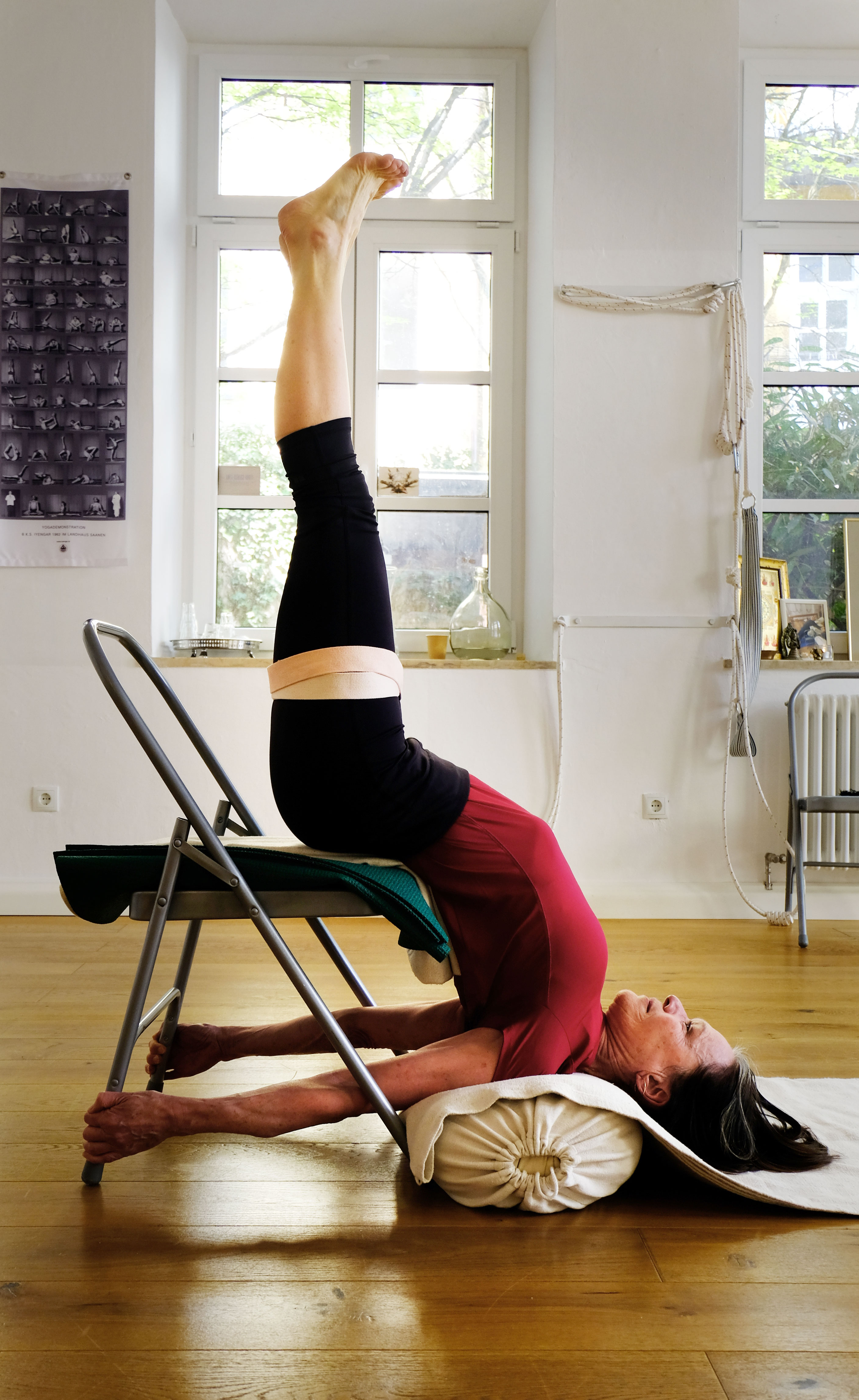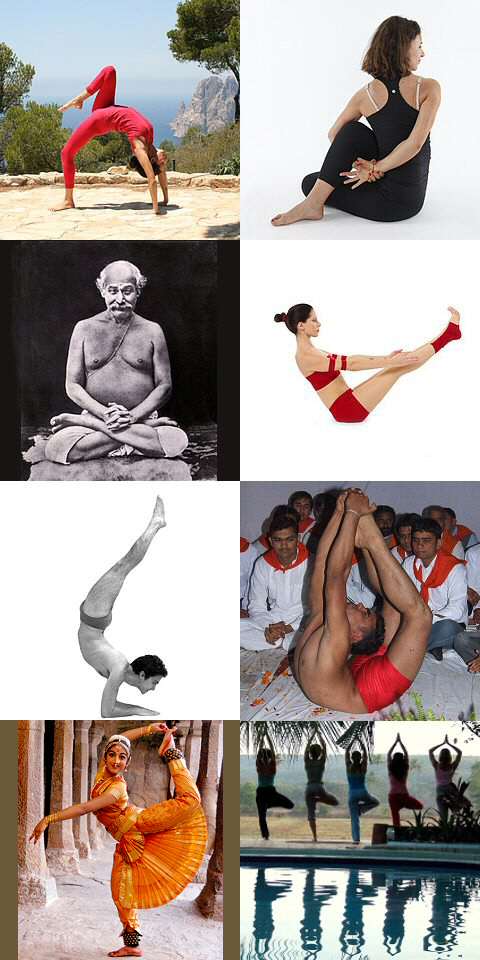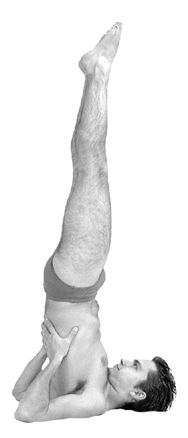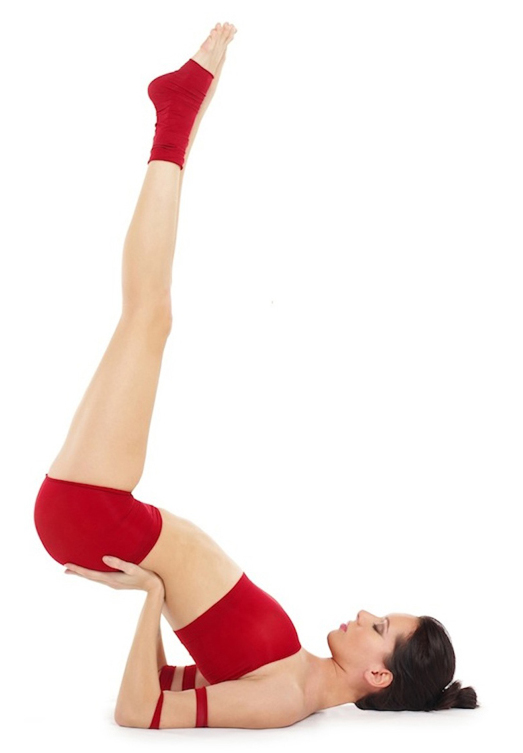|
Restorative Yoga
Restorative Yoga is the practice of asanas, each held for longer than in conventional yoga as exercise classes, often with the support of props such as folded blankets, to relax the body, reduce stress, and often to prepare for pranayama. Practice Restorative Yoga sessions allow the body to slow down and relax in a small number of asanas. Each pose is held for longer than in conventional classes, sometimes for twenty minutes, so a session may consist of only four to six asanas. The long holding of poses is often assisted with props such as folded blankets, blocks, and bolsters to ensure the body is fully supported and so to allow the muscles to relax. An early disciple of B.K.S. Iyengar, the yoga teacher and ''Yoga Journal'' editor Judith Lasater helped to popularize restorative yoga, based on Iyengar Yoga's asanas and use of props. Lasater states that "you will need" a yoga mat, four yoga blocks, three firm bolsters, three hand towels, three eye bags, eight firm blankets, ... [...More Info...] [...Related Items...] OR: [Wikipedia] [Google] [Baidu] |
Asana
An asana is a body posture, originally and still a general term for a sitting meditation pose,Verse 46, chapter II, "Patanjali Yoga sutras" by Swami Prabhavananda, published by the Sri Ramakrishna Math p. 111 and later extended in hatha yoga and modern yoga as exercise, to any type of position, adding reclining, standing, inverted, twisting, and balancing poses. The ''Yoga Sutras of Patanjali'' define "asana" as " position thatis steady and comfortable". Patanjali mentions the ability to sit for extended periods as one of the eight limbs of his system. Patanjali ''Yoga sutras'', Book II:29, 46 Asanas are also called yoga poses or yoga postures in English. The 10th or 11th century '' Goraksha Sataka'' and the 15th century '' Hatha Yoga Pradipika'' identify 84 asanas; the 17th century ''Hatha Ratnavali'' provides a different list of 84 asanas, describing some of them. In the 20th century, Indian nationalism favoured physical culture in response to colonialism. In that enviro ... [...More Info...] [...Related Items...] OR: [Wikipedia] [Google] [Baidu] |
Sarvangasana
Sarvangasana ( sa, सर्वाङ्गासन, translit=sarvāṅgāsana), Shoulder stand, or more fully Salamba Sarvangasana (Supported Shoulder stand), is an inverted asana in modern yoga as exercise; similar poses were used in medieval hatha yoga as a mudra. Many named variations exist, including with legs in lotus position and Supta Konasana with legs wide apart, toes on the ground. ''Sarvāṅgāsana'' has been nicknamed the "queen" or "mother" of all the asanas. Etymology and origins The name comes from the Sanskrit सालम्ब ''Salamba'', "supported", सर्वाङ्ग ''Sarvāṅga'', "all limbs", i.e. "the whole body", and आसन ''Āsana'', "posture"," position", or "seat". The name Sarvangasana is modern, but similar inverted poses were in use in medieval hatha yoga as a mudra, Viparita Karani, which is documented in the 14th century '' Śiva Saṃhitā'' 4.45-47, the 15th century ''Haṭha Yoga Pradīpikā'' 3.78-81, the 17th century ' ... [...More Info...] [...Related Items...] OR: [Wikipedia] [Google] [Baidu] |
Muscle Tone
In physiology, medicine, and anatomy, muscle tone (residual muscle tension or tonus) is the continuous and passive partial muscle contraction, contraction of the muscles, or the muscle's resistance to passive stretch during resting state.O’Sullivan, S. B. (2007). Examination of motor function: Motor control and motor learning. In S. B. O’Sullivan, & T. J. Schmitz (Eds), Physical rehabilitation (5th ed.) (pp. 233-234). Philadelphia, Pennsylvania: F. A. Davis Company. It helps to maintain neutral spine, posture and declines during REM sleep. Purpose If a sudden muscle pull, pull or stretch occurs, the body responds by automatically increasing the muscle's tension, a reflex which helps guard against danger as well as helping maintain balance disorder, balance. Such near-continuous innervation can be thought of as a "default" or "steady state" condition for muscles. Both the Extension (kinesiology), extensor and flexion, flexor muscles are involved in the maintenance of a consta ... [...More Info...] [...Related Items...] OR: [Wikipedia] [Google] [Baidu] |
Heart Rate
Heart rate (or pulse rate) is the frequency of the heartbeat measured by the number of contractions (beats) of the heart per minute (bpm). The heart rate can vary according to the body's physical needs, including the need to absorb oxygen and excrete carbon dioxide, but is also modulated by numerous factors, including, but not limited to, genetics, physical fitness, stress or psychological status, diet, drugs, hormonal status, environment, and disease/illness as well as the interaction between and among these factors. It is usually equal or close to the pulse measured at any peripheral point. The American Heart Association states the normal resting adult human heart rate is 60–100 bpm. Tachycardia is a high heart rate, defined as above 100 bpm at rest. Bradycardia is a low heart rate, defined as below 60 bpm at rest. When a human sleeps, a heartbeat with rates around 40–50 bpm is common and is considered normal. When the heart is not beating in a regular pattern, this is ref ... [...More Info...] [...Related Items...] OR: [Wikipedia] [Google] [Baidu] |
Blood Pressure
Blood pressure (BP) is the pressure of circulating blood against the walls of blood vessels. Most of this pressure results from the heart pumping blood through the circulatory system. When used without qualification, the term "blood pressure" refers to the pressure in the large arteries. Blood pressure is usually expressed in terms of the systolic pressure (maximum pressure during one heartbeat) over diastolic pressure (minimum pressure between two heartbeats) in the cardiac cycle. It is measured in millimeters of mercury ( mmHg) above the surrounding atmospheric pressure. Blood pressure is one of the vital signs—together with respiratory rate, heart rate, oxygen saturation, and body temperature—that healthcare professionals use in evaluating a patient's health. Normal resting blood pressure, in an adult is approximately systolic over diastolic, denoted as "120/80 mmHg". Globally, the average blood pressure, age standardized, has remained about the same since 1 ... [...More Info...] [...Related Items...] OR: [Wikipedia] [Google] [Baidu] |
Adrenaline
Adrenaline, also known as epinephrine, is a hormone and medication which is involved in regulating visceral functions (e.g., respiration). It appears as a white microcrystalline granule. Adrenaline is normally produced by the adrenal glands and by a small number of neurons in the medulla oblongata. It plays an essential role in the fight-or-flight response by increasing blood flow to muscles, heart output by acting on the SA node, pupil dilation response, and blood sugar level. It does this by binding to alpha and beta receptors. It is found in many animals, including humans, and some single-celled organisms. It has also been isolated from the plant ''Scoparia dulcis'' found in Northern Vietnam. Medical uses As a medication, it is used to treat several conditions, including allergic reaction anaphylaxis, cardiac arrest, and superficial bleeding. Inhaled adrenaline may be used to improve the symptoms of croup. It may also be used for asthma when other treatments are not eff ... [...More Info...] [...Related Items...] OR: [Wikipedia] [Google] [Baidu] |
Fight-or-flight Response
The fight-or-flight or the fight-flight-or-freeze response (also called hyperarousal or the acute stress response) is a physiological reaction that occurs in response to a perceived harmful event, attack, or threat to survival. It was first described by Walter Bradford Cannon. His theory states that animals react to threats with a general discharge of the sympathetic nervous system, preparing the animal for fighting or fleeing. More specifically, the adrenal medulla produces a hormonal cascade that results in the secretion of catecholamines, especially norepinephrine and epinephrine. The hormones estrogen, testosterone, and cortisol, as well as the neurotransmitters dopamine and serotonin, also affect how organisms react to stress. The hormone osteocalcin might also play a part. This response is recognised as the first stage of the general adaptation syndrome that regulates stress responses among vertebrates and other organisms. Name Originally understood as the fight-o ... [...More Info...] [...Related Items...] OR: [Wikipedia] [Google] [Baidu] |
Shavasana
Shavasana ( sa, शवासन; IAST: ''śavāsana''), Corpse Pose, or Mritasana, is an asana in hatha yoga and modern yoga as exercise, often used for relaxation at the end of a session. It is the usual pose for the practice of yoga nidra meditation, and is an important pose in Restorative Yoga. Etymology and origins The name Shavasana is from Sanskrit शव ''Śava'', "corpse" and आसन ''Āsana'', "posture" or "seat". The alternative name Mritasana is from Sanskrit मृत ''mṛta'', "death". The earliest mention of the pose is in the 15th century ''Hatha Yoga Pradipika'' 1.32, which states in the context of a medieval belief system that "lying down on the ground supine, like a corpse, is called Shavasana. It eliminates tiredness and promotes calmness of the mind." The name Supta Padangusthasana is from Sanskrit सुप्त पादाङ्गुष्ठासन ''supta pādāṅguṣṭhāsana'', from सुप्त supta, "reclined" and पादाङ् ... [...More Info...] [...Related Items...] OR: [Wikipedia] [Google] [Baidu] |
Balasana
Bālāsana ( sa, बालासन) or Child Pose, is a kneeling asana in modern yoga as exercise. Balasana is a counter asana for various asanas and is usually practiced before and after Sirsasana. Etymology and origins The name comes from the Sanskrit words बाल ''bala'', "child" and आसन ''āsana'', "posture" or "seat". Balasana is not described until the 20th century; a similar pose appears in Niels Bukh's 1924 ''Primary Gymnastics''. Ananda Balasana is illustrated as Kandukasana (Ball Pose) in the 19th century ''Sritattvanidhi''. Description From a kneeling position, bring the forehead to the floor and relax the arms alongside the body, palms upwards. Variations If need be, and during pregnancy, the knees can be spread. The arms may be stretched forward in front of the head. If there is discomfort in the neck and shoulders, a rolled blanket may be placed on the backs of the lower legs, and the forearms can be stacked and the forehead rested on them. ... [...More Info...] [...Related Items...] OR: [Wikipedia] [Google] [Baidu] |
Paschimottanasana
Pashchimottanasana ( sa, पश्चिमोत्तानासन, translit=paścimottānāsana), Seated Forward Bend, or Intense Dorsal Stretch is a seated forward-bending asana in hatha yoga and modern yoga as exercise. Janusirsasana is a variant with one knee bent out to the side; Upavishthakonasana has the legs straight and wide apart. Etymology and origins The name Paschimottanasana comes from the Sanskrit words ''paschima'' (पश्चिम, paścima) meaning "west" or "the back of the body"; ''uttana'' (उत्तान, uttāna) meaning "intense stretch" or "straight" or "extended"; and ''asana'' (आसन, āsana) meaning "posture" or "seat". The pose is described in the 15th-century ''Hatha Yoga Pradipika'', chapter 1, verses 28-29. The name Dandasana ( sa, दण्डासन; IAST: ''daṇḍāsana'') is from Sanskrit दण्ड ''daṇḍa'' meaning "stick" or "staff". The pose is not found in the medieval hatha yoga texts. The 19th century ''Sritat ... [...More Info...] [...Related Items...] OR: [Wikipedia] [Google] [Baidu] |
Jathara Parivartanasana
Jathara Parivartanasana (Sanskrit ञठर परिवर्तनासन), Revolved Abdomen pose, Belly twist, or Spinal twist is a reclining twist ''asana'' in modern yoga as exercise. Etymology and origins The name is from the Sanskrit ञठर ''Jaṭhara'', stomach or abdomen; परिवर्तन ''Parivartana'', to turn around; and आसन ''āsana'', posture or seat. The pose is not found in medieval hatha yoga texts, but is described in 20th century manuals including B. K. S. Iyengar's 1966 ''Light on Yoga''. Description The full pose, sometimes called Jathara Parivartanasana B, is entered from a supine position, with the arms outspread on the ground, level with the shoulders. For the full pose, the legs are raised straight up and then lowered to one side, keeping the opposite shoulder on the ground. In Ashtanga Vinyasa Yoga, the pose is used cautiously, in combination with deep muscle exercises, to help relieve low back pain: it is not sufficient on its ... [...More Info...] [...Related Items...] OR: [Wikipedia] [Google] [Baidu] |
Viparita Karani
Viparita Karani ( sa, विपरीतकरणी; ) or legs up the wall pose is both an asana and a mudra in hatha yoga. In modern yoga as exercise, it is commonly a fully supported pose using a wall and sometimes a pile of blankets, where it is considered a restful practice. As a mudra it was practised using any preferred inversion, such as a headstand or shoulderstand. The purpose of the mudra was to reverse the downward flow of vital fluid being lost from the head, using gravity. Etymology and origins The name comes from the Sanskrit words विपरीत ''viparīta'', "inverted" or "reversed", and करणी ''karaṇī'', "a particular type of practice". The practice is described in the 13th century ''Vivekamārtaṇḍa'' (verses 103-131) as a means of yogic withdrawal, pratyahara. The pose was practised from the 17th century onwards in hatha yoga under names such as Narakasana, Kapalasana and Viparitakaranasana; its purpose as a mudra was to reverse the do ... [...More Info...] [...Related Items...] OR: [Wikipedia] [Google] [Baidu] |









